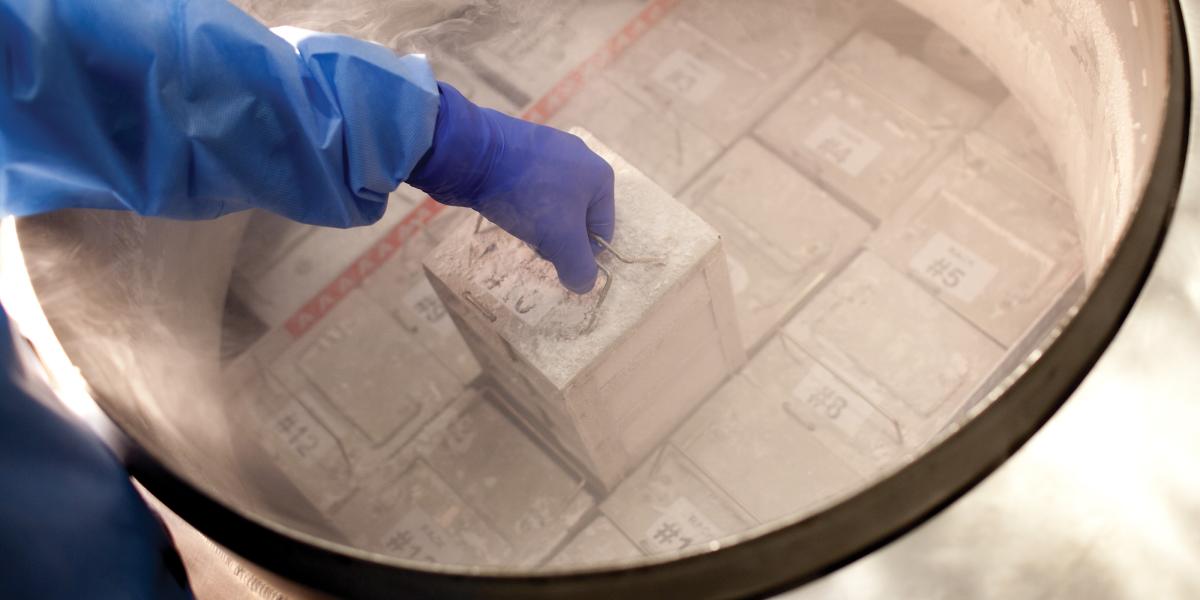Stop Time
Hurricanes like Katrina and Sandy can devastate not only communities but science. In addition to the human lives and property destroyed, the storms ruined thousands of irreplaceable frozen research specimens kept in basements that flooded.
Until recently, the Bloomberg School was just one natural disaster away from a similar fate. Established in 1984, the Johns Hopkins Biological Repository had for years consisted of 120 freezers in the School’s basement; there, millions of samples were frozen in time.
The setup, however, was less than ideal. The electricity required to run the freezers drained financial and environmental resources. But the possibility of losing decades’ worth of specimens from high profile projects like the Multicenter AIDS Cohort Study made finding a better situation imperative.
The ideal facility could accommodate cryogenic technology, which preserves specimens in liquid nitrogen, says Homayoon Farzadegan, PhD, director of the biorepository and a professor of Epidemiology. Ultimately, the search led to an industrial park three miles away from the East Baltimore campus, where the new biorepository opened in January. The old freezers have been replaced with 60 cryogenic storage units requiring a fraction of the electricity and space. One of only a few such academic facilities on the East Coast, the biorepository currently houses 2.5 million samples and is available to researchers at Johns Hopkins and outside organizations.
By allowing researchers to store a wide range of specimens—from hair to saliva to cord blood—cryogenics enables scientific research that would otherwise be impossible.
A good example, Farzadegan says, is the use of the viral load marker in studying and treating AIDS patients. By studying the preserved blood of patients from the mid-1980s, scientists learned that viral load could indicate the likelihood of an HIV patient developing AIDS. “The only way to assess this was to use frozen samples from the mid-1980s and follow those individuals whose blood we had collected,” he explains. “Now HIV viral load marker is used around the world to monitor HIV treatment.”
